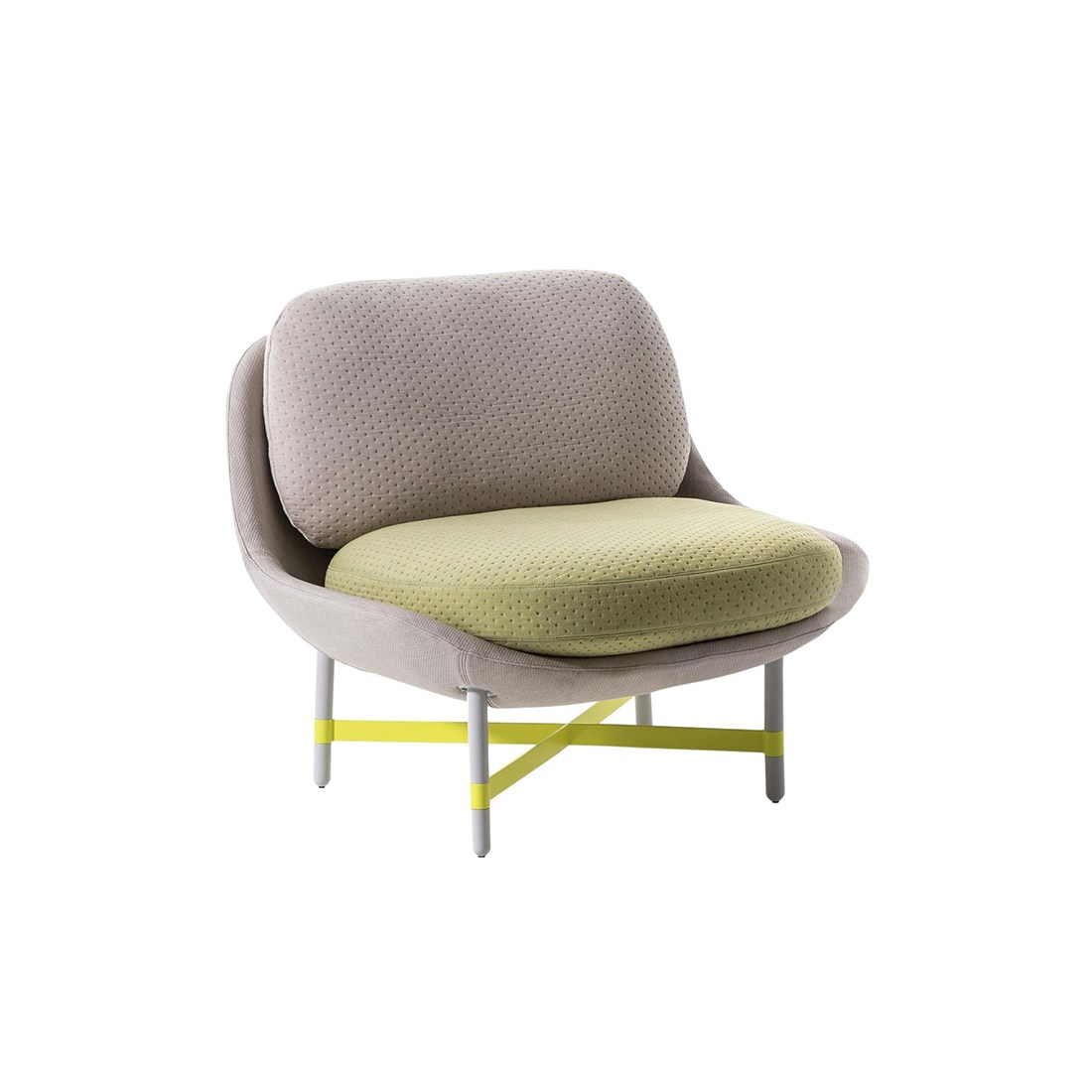Armada Armchair
- Designer:
- Doshi Levien
- Brand:
- Moroso
We don't appear to have any products related to your search term. Please try again.
Shipping and discount codes are added at checkout.






Ottoman Armchair Specifications
A range of fabric samples are available please enquire to view the full range.
A new fabric for a new way of sitting. This new way of sitting will probably be more like lying. The seat height is lower than usual, and the furniture’s open design allows for more freedom of movement. Spatial dimensions, layered patterns and colour use are central considerations in the fabric design. Scholten & Baijings’ first sketches and scale models consist of soft, rectangular ‘Daybeds’ that offer multiple uses: sitting, leaning against, lounging or lying down, alone or with each other. The use of futons, as customary in typically Japanese rooms, served as an important source of inspiration.
In the second sketch phase the idea emerged to use the old Ottoman Empire as an imaginative starting point. A footstool is also called an Ottoman. Ottoman history provides many magnificent examples of decorative interior fabrics in combination with low seating elements, intended to encourage social interaction among people. Images evoked are those of tea drinking, the use of a waterpipe, or the enjoyment of a shared meal. In addition, numerous examples exist of fabric designs in vibrant colours and with clear graphic patterns, used in wide-open, spacious interiors.
The furniture design is unlike that of the fabric. The Ottoman’s design is characterized by rounder, softer and more organic forms. This is in contrast with the fabric’s angular colour compositions and creates a magnificent symbiosis. However, both designs also work very effectively on their own.
Injected flame-retardant polyurethane foam over internal steel frame. Seat and back cushions are polyester fiberfill over flame-retardant polyurethane foam and memory foam chips. Legs are steel with powder coat finish. Ottoman collection covers are not removable.
A new fabric for a new way of sitting. This new way of sitting will probably be more like lying. The seat height is lower than usual, and the furniture’s open design allows for more freedom of movement. Spatial dimensions, layered patterns and colour use are central considerations in the fabric design. Scholten & Baijings’ first sketches and scale models consist of soft, rectangular ‘Daybeds’ that offer multiple uses: sitting, leaning against, lounging or lying down, alone or with each other. The use of futons, as customary in typically Japanese rooms, served as an important source of inspiration.
In the second sketch phase the idea emerged to use the old Ottoman Empire as an imaginative starting point. A footstool is also called an Ottoman. Ottoman history provides many magnificent examples of decorative interior fabrics in combination with low seating elements, intended to encourage social interaction among people. Images evoked are those of tea drinking, the use of a waterpipe, or the enjoyment of a shared meal. In addition, numerous examples exist of fabric designs in vibrant colours and with clear graphic patterns, used in wide-open, spacious interiors.
The furniture design is unlike that of the fabric. The Ottoman’s design is characterized by rounder, softer and more organic forms. This is in contrast with the fabric’s angular colour compositions and creates a magnificent symbiosis. However, both designs also work very effectively on their own.
Injected flame-retardant polyurethane foam over internal steel frame. Seat and back cushions are polyester fiberfill over flame-retardant polyurethane foam and memory foam chips. Legs are steel with powder coat finish. Ottoman collection covers are not removable.
Designer
Stefan Scholten and Carole Baijings established their eponymous studio for design Scholten & Baijings in 2000, and are now widely regarded as of one of the most exciting...

